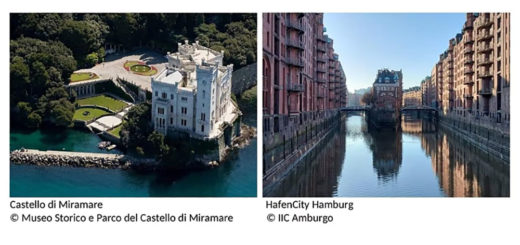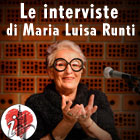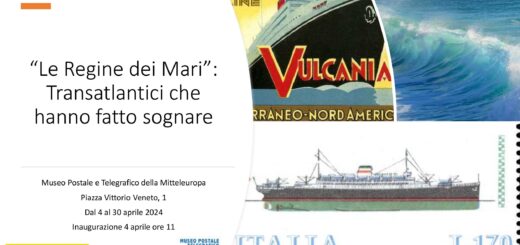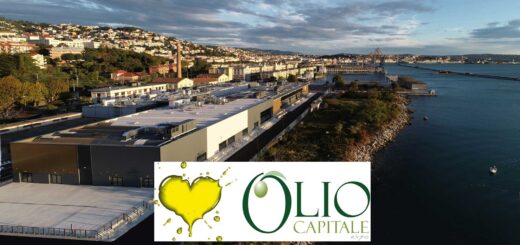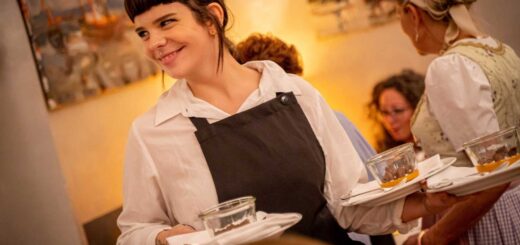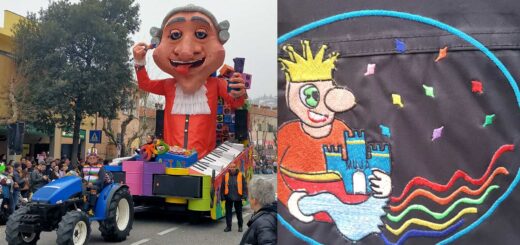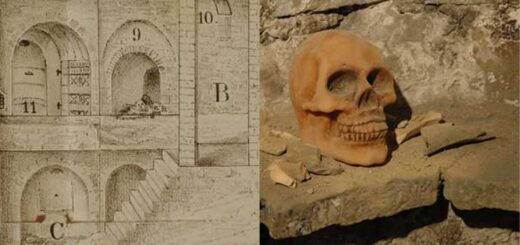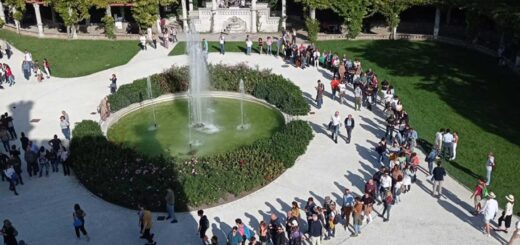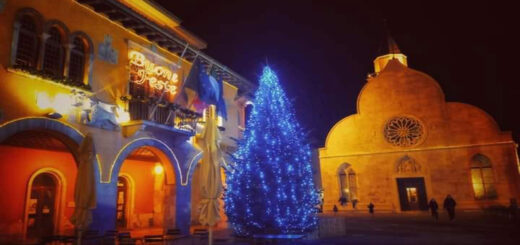Simple guide for tourists
Whether you're visiting Trieste for a few days or are a localite, Trieste is sure to have something new for you. Explore our guide that tells you about the best tourist places to visit and things to do in Trieste. This guide will give you an idea about the popular attractions, upcoming tourist spots, and off-beat things to do in Trieste. This makes it easy to plan weekends or long vacations in Trieste. We have compiled this cool stuff to do in Trieste keeping in mind the points of interest for families, groups, and romantic couples. Looking at the activities for adventure junkies in Trieste listed here will get the blood rushing and adrenaline pumping through your veins.
Check out free places to visit in Trieste which you can visit without spending a penny. Handpicked tours, day trips, and excursions in Trieste will make your visit comfortable. You will also find the opening and closing time, along with the time required to cover major attractions. This will help you to have a flawless plan without much hassle. We have also included eateries in Trieste recommended by locals.
Tourist Attractions in Trieste
Here is the list of things to do in Trieste and tourist attractions in city.
Miramare Castle
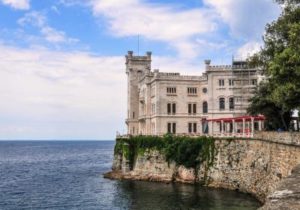
The Castle of Miramare and its Park were built by Ferdinand Maximilian of Hapsburg who decided to have a residence befitting his rank built on the outskirts of Trieste, facing the sea and surrounded by a lush garden. The castle is breathtaking to say the least and the surrounding gardens add to the unadulterated beauty.The remarkable architecture of the Castle is the amalgamation of Gothic, medieval and Renaissance styles and reflects the eclectic taste of the Archduke. Franz Hoffman was entrusted with the decoration of the house and did a brilliant job with the furnishings and the styling of the mansion. The view on top of the castle is absolutely spell binding. All in all, the castle and the grounds are immaculately preserved and offer a peak into royal homes of the past.
The museum inside the castle holds many of the original furnishings, ornaments and objects that date back to the mid 19th Century and showcases the well preserved living quarters of the family. There is an information room that depicts the history of the castle and the park's construction. All the rooms still feature the original furnishings, ornaments, furniture and objects dating back to the middle of the 19th century. Particularly noteworthy are the music room and a series of paintings by Cesare dell'Acqua depicting the history of Miramare. Lastly, visitors can also see the throne room, which has gone through a recent refurbishment.
Civico museo Della Risiera Di San Sabba
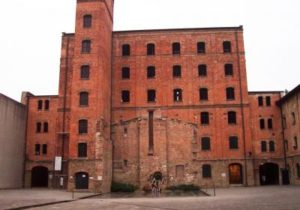
Now a national monument to commemorate the killing of thousands of people by the Nazis, this was once a rice husking facility constructed in 1898 in San Sabba on the outskirts of Trieste. It was used by the Germans as a temporary prison where all sorts of inhumanities were subjugated on inmates. Moving personal messages are still see engraved on the walls of this building. Along with a prison, this was even a transit camp where a number of horrors took place against the prisoners. While the Risiera doesn't have modern museum technology components, this is a must-see to learn about a chilling aspect of European history and pay homage to the many victims who lost their lives here.
Opicina Tramway (out of service now)
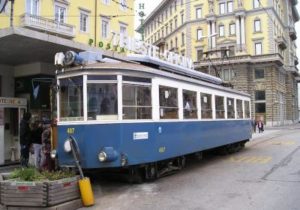
The iconic Opicina Tramway links Piazza Oberdan, on the northern edge of the city center, with the village of Villa Opicina in the hills above. The Opicina tram takes you up from the city to the surrounding beautiful natural environment of the Carso plateau which lies at 348 m above sea level. The tram leaves from Opicina and arrives at the terminus that is located in the center of town at Piazza Oberdan, and the cable railway section begins just a few hundred meters away. Tramway no. 2 departures are every 20 minutes from early morning to early evening. The line was first run in the year 1902. Interestingly, on the steepest section of the line, between Piazza Scorcola and Vetta Scorcola, the trams are pushed uphill and braked downhill by a pair of cable tractors. This special means of transport is a memorable experience during their stay in Trieste.
Golfo Di Trieste
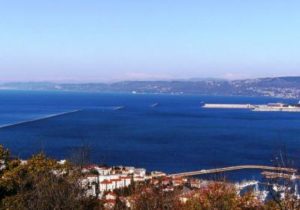
Trieste loves its Carso and its sea. Passing along the seafront in Trieste (called the “Rive”) provides a spectacular overview of the town and its buildings,on the variety of architectural styles that reminds the visitors of the splendor of the Habsburg Empire, so soaked in nostalgia and history that when one looks up towards San Giusto Hill, one is soaked in awe.
This area also hosts the Old Free Port and the Assicurazioni Generali building, the Canal and Molo Audace (Audace Wharf), another iconic symbol of the town.
Castle and Cathedral of Saint Giusto
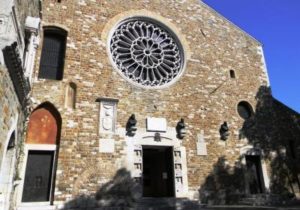
Originally a Roman fort, was built by the Venetians in the Middle Ages and was eventually pulled down in the 14th century by will of the Patriarch of Aquileia and, in 1470itself, it was rebuilt by Friedrich II of Habsburg. Currently, the museum of Trieste is located here. The castle has been preserved in an immaculate condition and offers beautiful views of the sea and the city. There are great displays within the castle on ancient weapons and other interesting objects from its past. There also are underground catacombs that are open for exploration. There are three attractions that visitors can visit at this location-
- The Roman Ruins
- The Museum
- The Cathedral of San Gusto
Barcola
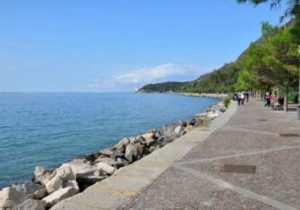
Sunbathe under the Mediterranean sun, under the pine trees or take in the splendid views of the Adriatic sea, Barcola is the place to be if you want to enjoy some time near the water. This seaside neighborhood is popular amongst locals and tourists for its pine trees, panoramas and beautiful walkways. This is also the venue for the famous Barcolana regatta, a European sailing race that happens every year in October. A great place for some swimming and sun-soaking, Barcola has a chilled out vibe. There are some small beach bars and a marina in this area.
Molo Audace
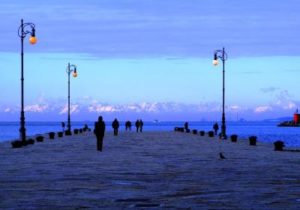
This 245 meter long pier that juts out in the Adriatic sea is quite popular amongst tourists and locals for its gorgeous views and romantic setting. Just a few steps away from the famous Piazza Unità d'italia, this molo makes for a great evening walk to experience magical sunsets over the endless waters of the sea. Originally, the Molo Audace was called Molo San Carlo; this name was derived from the ship San Carlo that sank in Trieste harbour, the wreck of which was used as a base for building a new pier between 1743 and 1751. Eventually, it renamed as Molo Audace dedicated to the torpedo-boat destroyer Audace.
Canal Grande
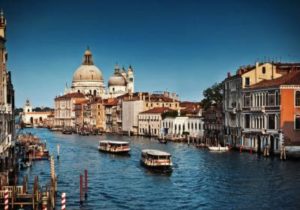
Canal Grande is a canal situated in the city center of Trieste. It is located midway between the railway station and the city center. A number of interesting buildings and attractions face the Canal. Some of them include Palazzo Gopcevich, with its peculiar white and red plaster and the church of St. Anthony Thaumaturge. The canal adds oodles of charm and personality to the city of Trieste. It makes for a good place to stop and observe local life and have a cup of coffee.
Carso Triestino
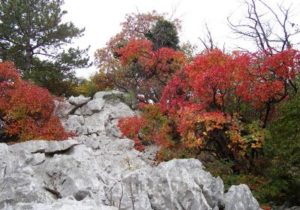
Only a few kilometers from downtown Trieste lies the beautiful Karst Plateau that is full of many opportunities for recreation and sightseeing.This place affords fantastic views of the Adriatic sea and has a number of restaurants, caves and excursions that lure visitors again and again. The Carsico Plateau is of significant natural importance thanks both to its unusual geology and its typical flora and fauna.
Its unique geographic position, between the Atlantic climate and the continental one, creates microclimates that enhance the variety of flora and diversify the countryside. As well as providing a natural countryside of unparalleled beauty, the Carso is also characterised by the presence of numerous points of historical and cultural interest: typically Italian towns that are perfectly integrated into the surroundings and numerous fortresses from the Great War have borne witness to great historical events in this border area .
The highlights of this area include:
- Typically products like wine and olive oil
- Speleological Museum
- Stalactites and Stalagmites (Grotta Gigante)
- Holiday Farms
- World War Fortifications
Val Rosandra
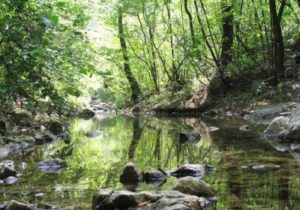
On the border of Slovenia lies this natural paradise called Val Rosandra which is a valley named after the river that runs through it. Designated as a national park, there are a number of recreational possibilities for adventure and nature enthusiasts here. From hiking, climbing to simply enjoying the view, this valley is quite popular for its untouched beauty and bountiful surrounding vegetation.
Cittavecchia Or Old Quarter
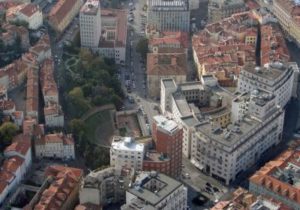
Trieste boasts an extensive old city: with narrow, wayward and cobbled streets with typically medieval houses. Nearly the entire area is closed to traffic so it makes for a great place to stroll. There are a number of shopping areas and eateries around and the whole place has a vintage feel to it. Surrounded by beautiful old world architecture, the Old Quarter is ideal to take in the real feel of the city.
Faro Della Vittoria Or Victory Lighthouse
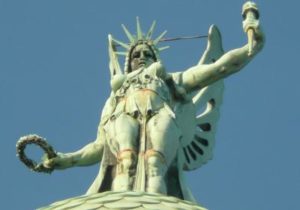
Apart from guiding the night time navigation on the Gulf of Trieste, the Victory Lighthouse also acts as a memorial to soldiers of the World War I. The lighthouse stands at an imposing height of 223 feet and has the honor of being one of the tallest lighthouses in the world. A sort of a landmark for the city, this lighthouse was built on the remains of an Austrian fortress. The statue called ‘Winged Victory' stands at the very top of the lighthouse, just under its powerful light that it shines for approximately 3500 miles. The architectural design of the lighthouse is beautifully done.
Saint Spyridon Church Or Chiesa Serbo Ortodossa Di San Spiridione
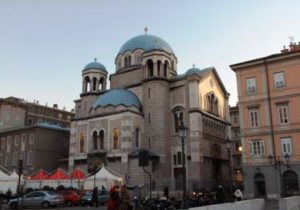
Built in the Greek orthodox style, the Saint Spyridon church is a magnificent church, both from the inside and the outside. The outer façade has sculptures from Emilio bisi and the architecture is designed by Carlo Maciachini. The Interior is a great combination of Serbian Orthodoxy elements and Italian baroque and byzantine styles. There is intricate mosaic work inside the church which looks even more spectacular when light shines on it. Sumptuously decorated and spiritually peaceful, this church makes for an interesting tourist attraction.
Museo Ferroviario Di Trieste Campo Marzio
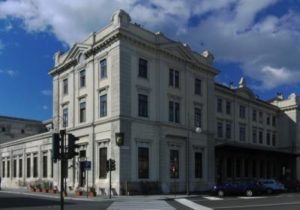
Dedicated to the complex railway system in the region of Friuli Venezia Giulia, this museum depicts miniature models of the railways and is located in the former train station of Campo Marzio. This museum is particularly interesting because Trieste has rich rail history as the railways were built according to the convenience of the rulers that controlled the city:Austria, Yugoslavia and Italy. The geography of mountains in the hinterland meant that the slope and height of the railways were to be exclusively tackled and posed a technological challenge.
This museum has an impressive variety of exhibitions including several working model railways in the old station buildings. The artefacts range from electrical control gear of the unique Italian 3-phase system to uniform caps; from signals to tickets.
Strada Vicentina
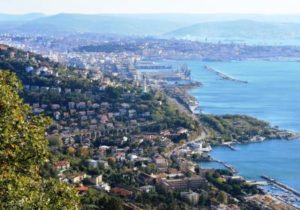
This breathtaking journey begins in the center of Trieste from the central square Piazza Oberdan in the tramway Tram de Opcina which is a living monument that is an absolute must visit for any tourist. After more than a century of active service, the tramway has become iconic in its own right.For visitors, this is promises to be an unforgettable moment of their visit of Trieste.
Teatro Romano Di Trieste
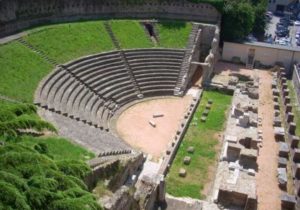
Excavated in 1814 and dating back to 1st century BC, this Roman Theatre stands at a place of pride, right in the center of the city. Easily seating 3500-6000 spectators, this theatre is an important archaeological discovery in Trieste. It is said to have built in the time of Emperor Trajan. It was destroyed in the 6th century when Trieste was under siege by the Lombards.
Trieste Natural History Museum
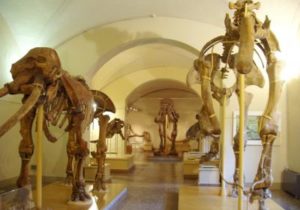
A wealth of natural treasures from the Adriatic and Karst await you at the oldest and most important museum in the area. Whether its dinosaur fossils those are one of the most important paleontological discoveries in the field or an imposing Great White Shark, there is a lot to be excited by at this museum. The remains of Hadrosaurus were found near Trieste and are practically complete.
Teatro Lirico Giuseppe Verdi
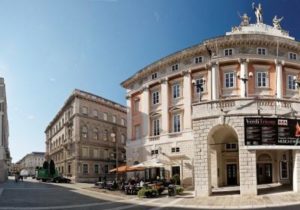
An opera house par excellence, Teatro Verdi is known to host some enticing opera shows. Inaugurated in 1801, this theatre was built to replace the Cesareo Regio Teatro di San Pietro that had limited seating capacity. A number of interesting shows have had their world premiere at this venue. It is built beautifully and has good acoustics that deliver a remarkable performance.
Kleine Berlin
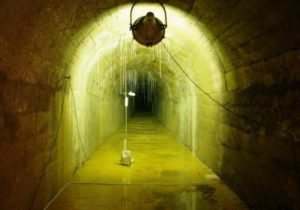
Kleine Berlin is a series of air raid tunnels that were used during the World War II by Germans. The German authorities built an anti-airraid tunnel for their soldiers and civilians in Trieste and hence began the construction work of Kleine Berlin. The underground complex is divided into two sections, one of Italian construction and one of German construction.
Civico Museo Sartorio
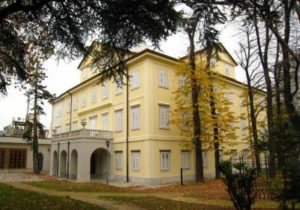
The Civico Sartorio museum has recently re-opened after many years of refurbishment. It is located in a charming eighteenth-century villa that belonged to the Sartorio family.The mansion still boasts of its original furnishings and décor including the porcelain, ceramics and the beautiful art collection. The Rusconi-Opuich collection that comprises about 2500 pieces of various kinds of artworks from ancient art to the contemporary 20th century paintings, drawings, prints, jewels, textiles, silverware, etc is a stunning one. The Tieplo drawings on display are also noteworthy.
The basement floor displays the collections of applied art, jewels and the remains of a Roman domus of the first century A.D. that was excavated during the renovation.
A connoisseur's delight, the picture gallery which is located in the rooms of the old stable, comprises over a thousand paintings of the collections of the Municipal Museums of History and Art.
Civico Museo D'arte Orientale
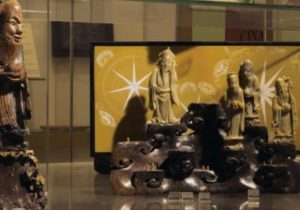
The first museum of its kind in the region to be dedicated to the Oriental Arts, this exhibition holds interesting objects, ranging from musical instruments, weapons and artworks. Spread over four sprawling floors, the museum also showcases Chinese specialties like fabrics, chinaware and ritual objects, sculptures from India and also a few Japanese memoirs. The collection is expansive and well-marked , and is a sort of testimony to the relations between Trieste and the East.
Maritime Museum Or Civico Museo Del Mare
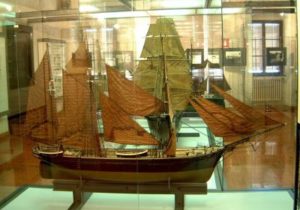
The city of Trieste has an interesting maritime history. Inaugurated in the 18th Century, this museum is an incredibly interesting museum that has a remarkable section dedicated to the art of fishing. There are ship models of various scales and didactic dioramas too. There are rare photographs and paintings and graphics that explain the undersea world and Trieste's maritime history beautifully.
Botanical Garden Of Trieste
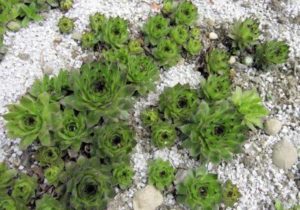
Befitting the beautiful city that it is part of, the Botanical Gardens at Trieste are a colorful natural paradise that is soothing to the eyes and calming to the soul. There is a number of different plant species exhibited at these gardens. Because of its natural habitat, the gardens are the ideal home to a number of exotic insects and birds. The Botanical Garden also preserves, cultivates and produces medical, textile, food, water and marsh plants, as well as succulent and cactuses, spontaneous flora from the Karst and surrounding areas.
Trieste Tourist Office
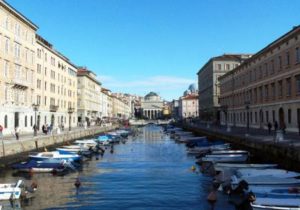
This tourist office offers great suggestions on what to see and do in Trieste and gives away informative maps and leaflets to visitors. The maps not only show the central parts of Trieste but also its surrounding areas and are a good source of information for the transports available and trips to be made out of town. This place is centrally located and can be easily found. The building itself is quite beautiful to look at.
Grotte Le Torri Di Slivia
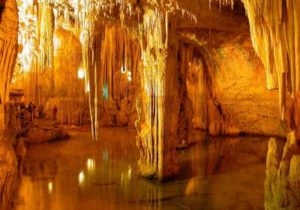
Located at the foot of a small village called Silvia, these caves are famous for their towering stalactites and stalagmites The caves were discovered in 1885. Recently reopened after close to forty years, these caves are considered one of the most magnificent features of the Karst Plateau. There are two entrances to the caves, through a natural pothole and on a descend of about 200 steps. Both these tours require experienced guides to accompany visitors. The Stalactites and Stalagmites are marvelous and some go up to 7 meters in height and 10 tons in weight.
Mercato Coperto
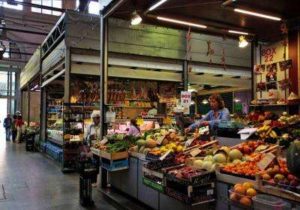
An old style market, the Mercato Coperto, stands out amongst all the other regular marketplaces. Built in a unique style in 1936, the building has a number of hawker stalls and interesting merchandise on sale. The ground floor has organic vegetables and fruits along side some Trieste specialties. On the upper floor, you can shop anything from clothes to shoes to souvenirs too. The old school- meets-art gallery look of the market gives it a feel of being a flea market from Paris or Amsterdam. This place popular with tourists and locals alike.
Caffe Stella Polare
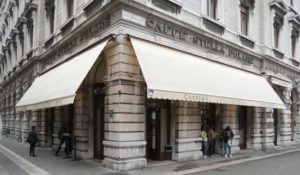
One of the oldest cafes in Trieste and popular as the hangout place of many soldiers and intellectuals, Caffe Stella Polare is an iconic restaurant.It has been witness to Trieste changing over the decades and has hosted people of all generations. It is situated in the heart of the Teresiano borough, next to the Serbian Orthodox Church of San Spiridione and very close to Piazza della Repubblica and Piazza Sant'Antonio.
It started as a typical Austrian-Hungarian Caffe, with the classical decorations of stuccoes and mirrors which are still partly present. With the end of the Second World War and the arrival in the city of the Anglo-Americans, this Café became a famous ballroom: from here many young women from Trieste sailed for the United States, happy wives of young American soldiers.
Teatro Verdi
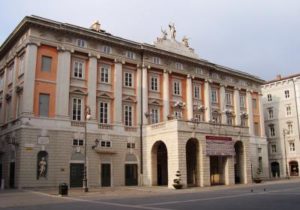
This is a famous opera house that is named after the composer Giuseppe Verdi. This name was given to it after a series of controversial name changes took place in this opera. In the last few decades, a very prominent feature of this place is the ‘International Festival of Operetta' which is organized here every summer and takes its roots from the city's former Austrian Government in the 19th century.
Science Centre Immaginario Scientifico
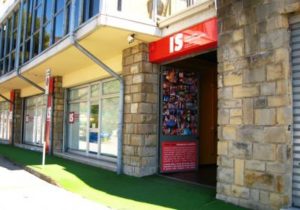
This museum is famous for its science interactive and multimedia and is the second largest science centre in Italy. The main aim of this place is to promote the popularity of science amongst children and students. There are 3 main sections in this place namely Fenomena, Kaleido and Cosmo. A lot of activities such as scientific experiments and educational activities go on here from time to time which make the visit enjoyable and interesting.
Caffe San Marco
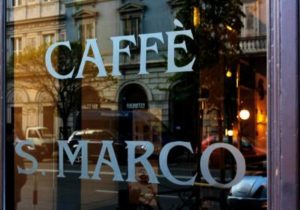
Evoke stories that are more than a century old at this charming historic caffe. One of Trieste's oldest cafes, Caffe San Marco is a must visit to taste a slice of history of the incredible city of Trieste. It was completely destroyed by the Austrians during the war, but was rebuilt in the twenties. The caffe was founded in 1914 and became a popular hangout for intellectuals and Austro-Hungarian troops. The original art nouveau interior and old school ambiance gives it a surreal ambiance that takes you back decades in time. The cafe serves honest, rustic Italian fare even though the service is a bit laid back.
Chiesa Di San Nicolo Dei Greci
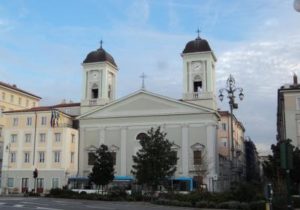
This Byzantine Greek Church, dedicated to St. Nicholas, probably dates back to 9th Century. The present church was rebuilt in 1765 on the remains of a Romanesque church. The neoclassical architecture of the church is highlighted in the Doric pilasters and the two ornate bell towers. Paintings in the interior of the church depict evangelist scenes and the single nave interior is said to be inspired by the Saint Spyrion Church.
Museo Revoltella
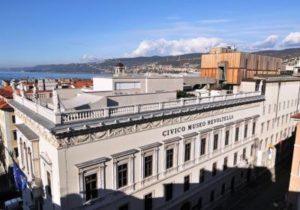
The Revoltella owes its existence (and name) to the baron Pasquale Revoltella, who ceded his palace, art collection and other personal belongings to the city administration upon his death in 1869.A charming mansion with many of the rooms still boasting of their original furnishings, tastefully done interiors and beautiful artworks are the most noteworthy aspects here. The museum's art collection includes paintings and sculptures, primarily comprised of works from the second half of the 19th and early 20th centuries, with a few more recent works from artists from Italy.
The building itself is a stunning example of medieval architecture and exudes a vintage feel on the onlooker. The rooftop terrace café are quite popular.
Piazza Dell'Unita D'Italia
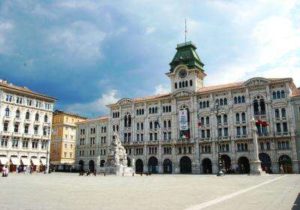
By far the best sight in Trieste, this square is perhaps the liveliest place too. It is the hub of social activity and a great spot for people watching too. The square has been in existence for about 700 odd years and is said to be the largest sea facing square in Europe. Earlier known as Piazza Grande, the name of this square changed after it was annexed under the Kingdom of Italy after the war. Surrounded by rhythmic hustle bustle, this square is surrounded by fascinating architecture, history and restaurants.


